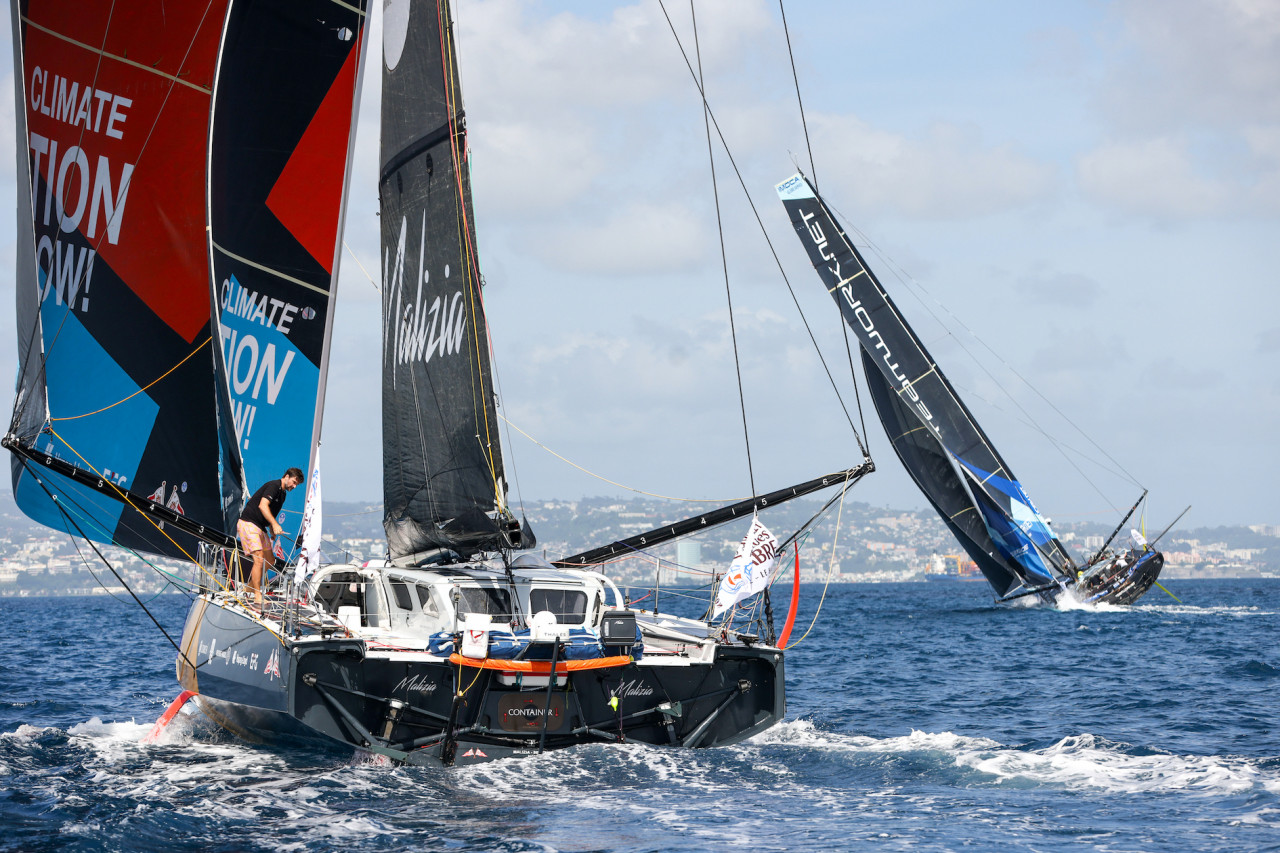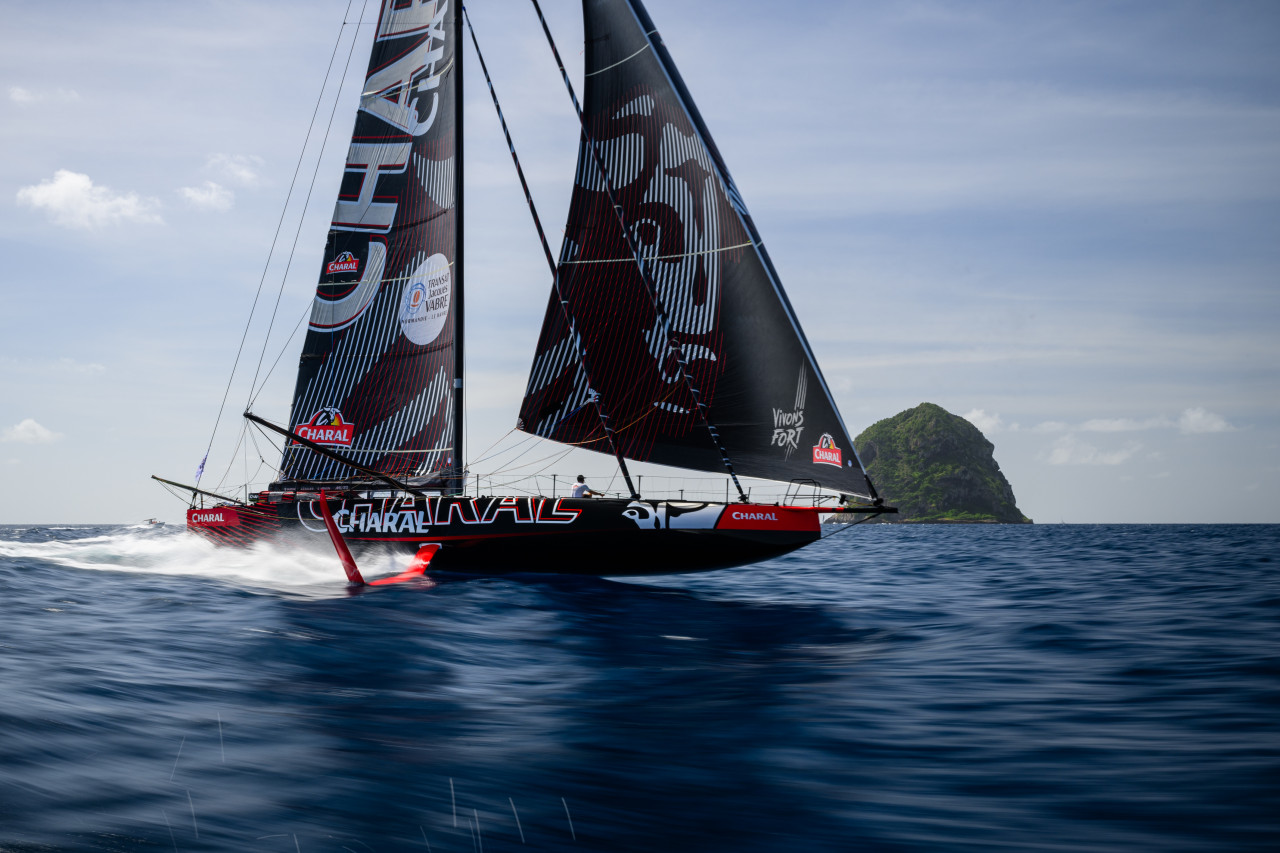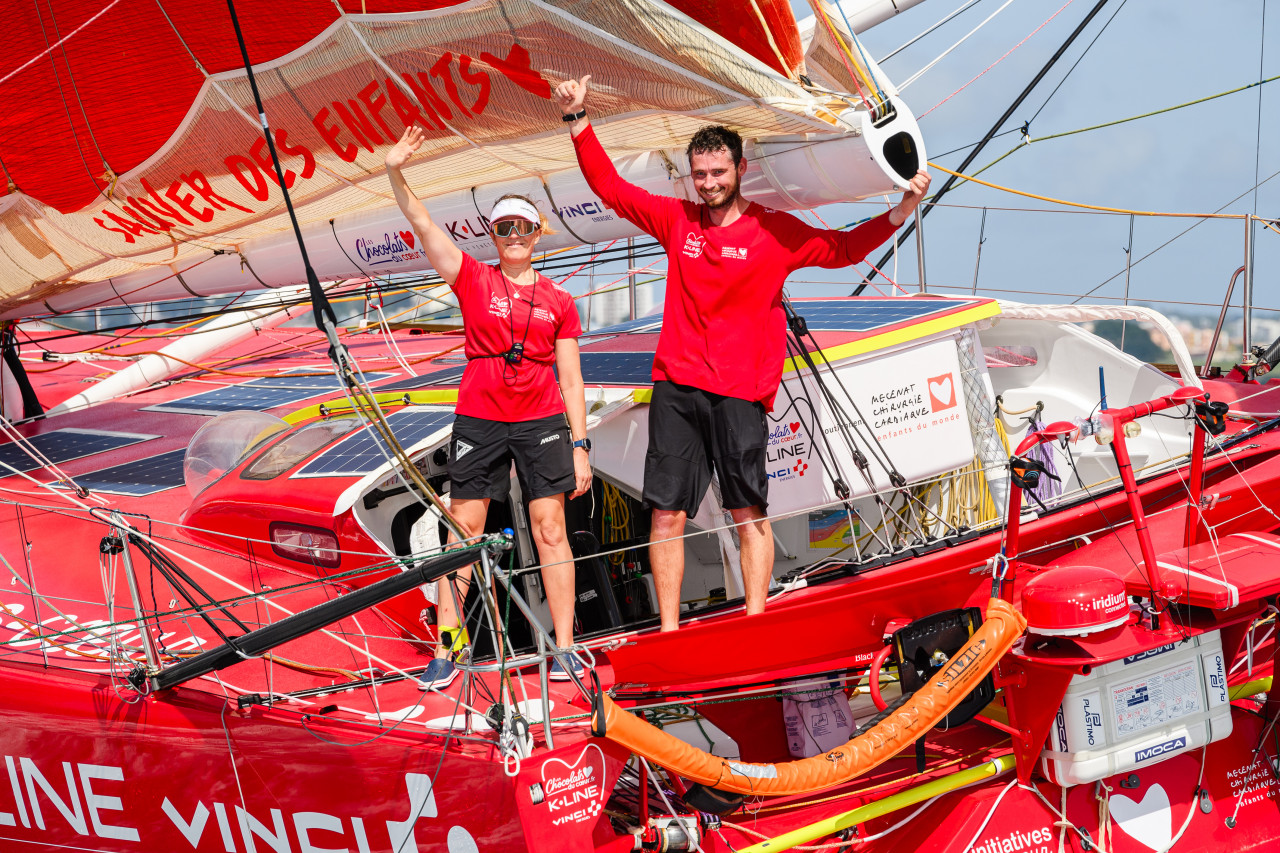Teamwork and Malizia-Seaexplorer light up the top-10 just 65 seconds apart

In recent years close finishes in the IMOCA Class after trans-oceanic races have become the norm, but the level of competition in the higher reaches of this record-breaking fleet never ceases to impress.
After Thomas Ruyant and Morgan Lagravière led the way to the finish of the Transat Jacques Vabre-Normandie Le Havre in the early hours of Sunday, followed by the crews on Paprec Arkéa and For The Planet, we had to wait half a day for the conclusion of a nail-biting contest for the teams finishing in fourth to seventh places.
And it turned into a thriller with the four boats finishing off Fort-de-France in just over 35 minutes. First came Jérémie Beyou and Franck Cammas on Charal, a team hampered by the loss of their big gennekar in the tradewinds. They were followed, just over 17 minutes later, by an elated Sam Davies, sailing with Jack Bouttell on Initiatives Coeur 4.

Then came one of the closest finishes in recent years as Justine Mettraux and Julien Villion, who had pioneered a “northerly” route across the Atlantic, and sailed a thousand nautical miles less than the winners, edged Boris Herrmann and Will Harris on Malizia-Seaexplorer by just 65 seconds, after 12 days, eight hours, 59 minutes and 58 seconds at sea.
Herrmann, who might have done even better had he and Harris not had to contend with serious electronic issues early in the race, was impressed by an ultra-competitive finish that saw Mettraux and Villion get ahead of them in the last miles to the line, as the boats sailed up the west coast of Martinique.
“In no other regatta in the world could we have a (mid-Atlantic) north-south split over more than 1,000 nautical miles and then arrive so close together. I think we were 40 miles behind Justine and Julien when they went west, and now we have arrived just over one minute behind them! We are happy with our decision,”he said.
While Ruyant and Lagravière on For People, had their work cut out staying ahead of second and third-placed Paprec Arkéa and For The Planet at the head of the race, the level of competition was no less intense for the boats in the middle of the top-10.
Of course Beyou and Cammas had not planned to be in this group at all and, after leading the race for long periods in the early stages on their Sam Manuard-designed foiler, were hoping to be competitive against the likes of Ruyant in the tradewinds. But a blown gennekar put paid to that, leaving them having to make do with a smaller reaching sail.
“There’s inevitably some frustration at not having been able to play a leading role right to the end,”reflected Beyou, who has enjoyed a profitable two-handed season with Cammas. “We broke a sail that was vital for the end of the race and we had to deal with that and cover more distance than the others.”Despite this disappointment, Beyou knows he is still in great shape for the build-up to the Vendée Globe. “I’ve made a lot of progress alongside Franck and the boat has progressed too,”he summarised.
Another skipper who can feel well-satisfied with her double-handed season is Davies. She has sailed with three different co-skippers this year, in Damien Seguin, Nico Lunven and now Jack Bouttell, and has scored one fourth place and three fifths on another Manuard boat that Bouttell believes still has some way to go in terms of optimisation.

Davies said she learnt an enormous amount sailing with Bouttell after a short preparation time together. “I guess this was the first time we’ve done any real downwind stuff in this boat and we had a new sail – a masthead code zero – and just learning about the pilot, the foils and the set-up, just everything, the trim and how hard you can push in those conditions. I learnt heaps in every different area of the boat,” she said.
Bouttell, a two-time Ocean Race winner, continues to build his reputation and must now be firmly established as among the leading contenders for the next available top quality boat in the IMOCA Class.
On Teamwork the ever-understated Mettraux was another skipper who could feel justifiably pleased with her work on the Atlantic course. On board the former VPLP-designed Charal, she and Villion had put seven newer IMOCAs behind them while sailing a race that had the armchair admirals gripped for days as they led the way in the north against their rivals in the tradewinds.
In the end it didn’t work out as the early routing suggested and a first victory in the Class eluded the impressive Swiss skipper. But she will now approach the solo season with renewed confidence in her own abilities and that of her boat. “The ‘mountain route’ isn’t easy, it gave us a hard time,”she said at the finish. “But it was worth trying and worth playing for.”
Herrmann and Harris, meanwhile, know they have a well-travelled and well-optimised VPLP-designed boat that could still make the podium, given the right breaks, after testing themselves against the newer designs who beat them this time. “We showed that we are strong competitors, that our boat is fast in downwind conditions and can be strong in the Vendée Globe,” said Herrmann at the finish.
“In that sense, we achieved our sporting goal for this race. Our top-seven finish is satisfying, but we think we learned that we can improve even further and have the results of the upcoming races reflect that,”he added.
The first of those upcoming races is the solo Retour à la Base which sets sail from Martinique for Lorient on November 30th, a contest that marks the beginning of the final build-up to the Vendée Globe next year.
Ed Gorman
Teams info
After a stunning 2025 season Sam Goodchild is the IMOCA Globe Series Champion for the second time
After a long season at the top of the IMOCA fleet that featured three race wins, Great Britain’s Sam Goodchild is for the second time in three years the IMOCA Globe Series Champion.
•••Quel rôle peut jouer la course au large dans la transformation du transport international ? Avec Pie…
Pour ce 10ᵉ épisode de Transitions, enregistré au Havre lors du départ de la Transat Café L'Or, nous recevons Jeremy Pochman, PDG de 11th Hour Racing, et Pierre-Antoine Morvan, responsable du pôle course au large et supe…
•••